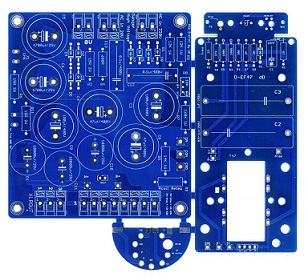Marik
Well-known member
Finally we found a good core for transformers, which would work very well in U47/U67/M49/M50 clone microphones and be an excellent replacement for BV8/BV11/BV12 types of the transformers. It has the same side ratio of 1:1.16 of original core, but smaller size helps reducing winding DCR and has greater low level resolution. It also can be used in smaller diameter mics, such as U87, C12, Elam250, etc., without sucrificing specs inherent to small transformers, traditionally used in those microphones.
It is a dual bobbin chambered design with humbucking connection (as original BV8). It has very low DCR, low losses, low phase shift, high overload on low frequencies, and excellent square wave response.
The specs are:
Primary DCR (for 1:8 ratio) 140 Ohm
-0.14dB @ 20Hz
-3dB @ 171KHz
Phase shift -7.5 degree @ 20KHz
Maximum level on primary @ 20Hz =5V RMS
Core size 1”x1.16”, 3/8” stack
Size of the PCB “window” for the bobbins: 0.5”x1.56”
Price: $165 plus shipping.
Best, M
It is a dual bobbin chambered design with humbucking connection (as original BV8). It has very low DCR, low losses, low phase shift, high overload on low frequencies, and excellent square wave response.
The specs are:
Primary DCR (for 1:8 ratio) 140 Ohm
-0.14dB @ 20Hz
-3dB @ 171KHz
Phase shift -7.5 degree @ 20KHz
Maximum level on primary @ 20Hz =5V RMS
Core size 1”x1.16”, 3/8” stack
Size of the PCB “window” for the bobbins: 0.5”x1.56”
Price: $165 plus shipping.
Best, M



































